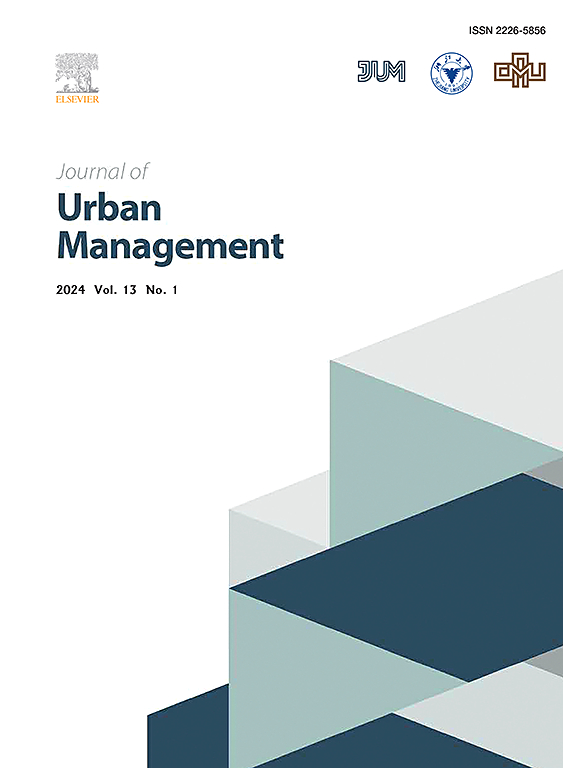The missing middle between the big and the small: Urban primacy in the Indian State of Karnataka
IF 5
2区 社会学
Q1 URBAN STUDIES
引用次数: 0
Abstract
Urban primacy in the Indian state of Karnataka is severe, since Bengaluru, the state's capital city, is more than eight times the size of the second biggest city. Our objectives in this paper are to investigate this primacy, estimating Zipf's law, understanding transport networks and inadequacies in municipal infrastructure, and adopting a non-conventional technique, i.e., that of surveying private firms, to understand how to alleviate the same.
Estimating Zipf's law, we find that Karnataka's primacy worsened during 2011-19. Using GIS maps, we find several road connectivity issues around smaller cities in the state of Karnataka. We find several gaps in municipal infrastructure such as roads, parks and storm water drains in the smaller cities. Based on a survey of 81 firms across selected 12 cities in the state (including Bengaluru), we find that their operation and maintenance costs are higher than investment costs, due to weak municipal infrastructure. The qualitative views of firms in the smaller towns regarding their disadvantages conformed to the objective evidence on their costs.
This has implications for better policies for balanced regional development not only in Indian states, but also other geographies characterized by primacy. These are that transport networks be extensive, and municipal infrastructure be robust to encourage firm and resident location decisions, for distribution of economic activity equally across the urban hierarchy.
大与小之间缺失的中间:印度卡纳塔克邦的城市中心
印度卡纳塔克邦(Karnataka)的城市中心化问题非常严重,因为该邦首府班加罗尔(Bengaluru)的面积是第二大城市的8倍多。我们在本文中的目标是调查这种首要地位,估计齐夫定律,了解交通网络和市政基础设施的不足,并采用非常规技术,即调查私营公司,以了解如何缓解同样的问题。估计Zipf定律,我们发现卡纳塔克邦的首要地位在2011-19年间恶化。使用GIS地图,我们发现卡纳塔克邦小城市周围的几个道路连接问题。我们发现,小城市的道路、公园和雨水渠等市政基础设施存在一些缺口。根据对该邦选定的12个城市(包括班加罗尔)的81家公司的调查,我们发现,由于市政基础设施薄弱,它们的运营和维护成本高于投资成本。小城镇企业关于其劣势的定性观点与关于其成本的客观证据相一致。这不仅对印度各邦,而且对其他以首要地位为特征的地区,都有更好的区域平衡发展政策的影响。这些条件是交通网络要广泛,市政基础设施要健全,以鼓励企业和居民作出选址决定,使经济活动在城市层级中平等分布。
本文章由计算机程序翻译,如有差异,请以英文原文为准。
求助全文
约1分钟内获得全文
求助全文
来源期刊

Journal of Urban Management
URBAN STUDIES-
CiteScore
9.50
自引率
4.90%
发文量
45
审稿时长
65 days
期刊介绍:
Journal of Urban Management (JUM) is the Official Journal of Zhejiang University and the Chinese Association of Urban Management, an international, peer-reviewed open access journal covering planning, administering, regulating, and governing urban complexity.
JUM has its two-fold aims set to integrate the studies across fields in urban planning and management, as well as to provide a more holistic perspective on problem solving.
1) Explore innovative management skills for taming thorny problems that arise with global urbanization
2) Provide a platform to deal with urban affairs whose solutions must be looked at from an interdisciplinary perspective.
 求助内容:
求助内容: 应助结果提醒方式:
应助结果提醒方式:


